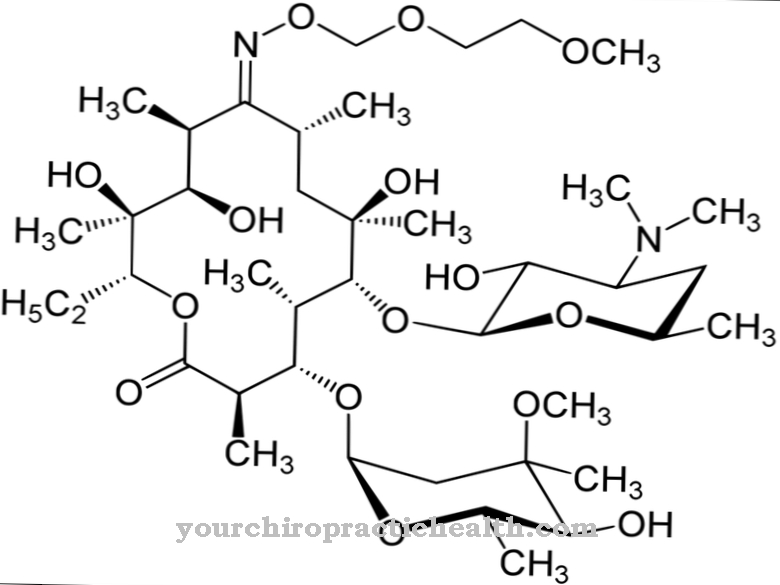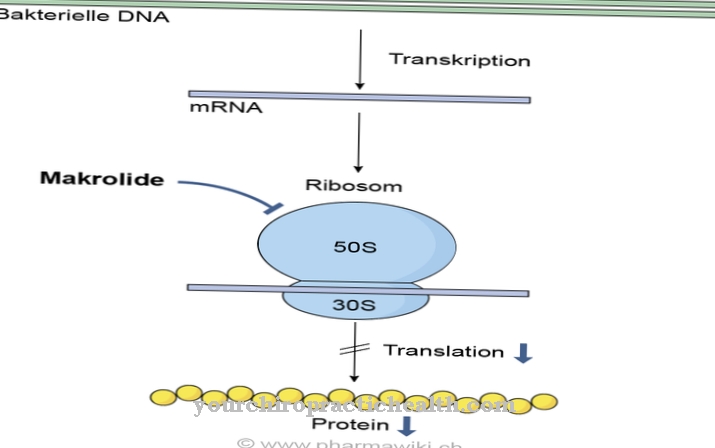urea, also urea called, is an end product of protein metabolism in the body and is excreted in the urine. It is formed in the so-called urea cycle via ammonia synthesis from amino acids. The urea concentration in the urine is, in addition to the creatinine concentration, an indicator of various disorders of protein metabolism and kidney diseases.
What is urea
.jpg)
urea is the first organic compound to be synthesized from inorganic raw materials. With the synthesis of urea from potassium cyanate and ammonia, the German chemist Friedrich Wöhler proved in 1828 that no organisms are required in the production of organic substances.
In this way the mysterious boundary between organic and inorganic chemistry disappeared. The chemical name for urea is carbonic acid diamide. It contains two amino groups and one CO double bond in the molecule. The molecular formula of urea is CH4N2O.
Urea is a non-toxic, white and crystalline substance with hygroscopic (water-attracting) properties, which is of greatest importance as a fertilizer in agriculture. Besides carbon dioxide, water and minerals, it is also one of the body's most important metabolic end products.
Pharmacological effect
The organism creates urea via the so-called urea cycle. Ultimately, via this cycle, the amino and carboxyl groups of the amino acids are used to synthesize urea.
The remaining nitrogen-free compound is broken down further into carbon dioxide and water or fed back into the metabolism. The amino groups can also be reintegrated into the material cycle. In the form of urea, nitrogen is no longer available for building up the body's own substances and is therefore excreted. The nitrogen balance can only be balanced by protein-rich foods. Although the urea concentration in the urine can fluctuate greatly depending on the nutritional status and physical situation, without being able to make a statement about the state of health, a long-term over- or under-concentration indicates health disorders.
Too high a urea concentration can occur with increased protein breakdown due to catabolic diseases such as cancer, intense inflammatory processes or necrosis. Filtration disorders of the kidneys also lead to increased urea values because the ammonia produced by the metabolism is no longer properly returned to the material cycle. The only alternative is to convert it into urea.
Otherwise the increased ammonia level would poison the body. Too low urea values indicate a very low protein diet or diseases with absorption disorders, such as celiac disease. However, the urea analysis can only lead to a meaningful diagnosis in connection with other laboratory values.
Medical application & use
Medical is urea both analytically and therapeutically important. The analytical meaning results from the already mentioned indicator function for various diseases.
Urea does not play a role in the eventual treatment of internal diseases. But it has properties that make its use such. B. make it interesting in cosmetics. Urea is hygroscopic, i.e. it attracts water. It is contained in sweat to make the skin supple. In the absence of urea, the skin becomes dry and tends to develop eczema and itching. This is why many creams contain urea to provide the skin with sufficient moisture.
Generally speaking, urea creams contain 2 to 20 percent urea. Another possible application for urea results from its keratolytic (corneal dissolving) effect. Formulations with a 40 percent urea content are able to dissolve corns and calluses. Furthermore, urea-containing creams are used for neurodermatitis and psoriasis. A particularly interesting area of application is for nail fungus, where the nail is softened in order to remove the fungus.
Risks & side effects
urea Creams containing them should not be used if the skin is hypersensitive to urea. This also applies to inflamed and injured skin. Avoid contact with the eyes and mucous membrane with agents containing urea. There is no experience with the treatment of children.
Therefore, the use of substances containing urea is not advisable here either. Hypersensitivity reactions are rare. However, if they do occur, the skin may burn, itch, or redden. Sometimes urea increases the release of drugs from other creams and ointments, which can increase their effectiveness.




.jpg)



.jpg)



















